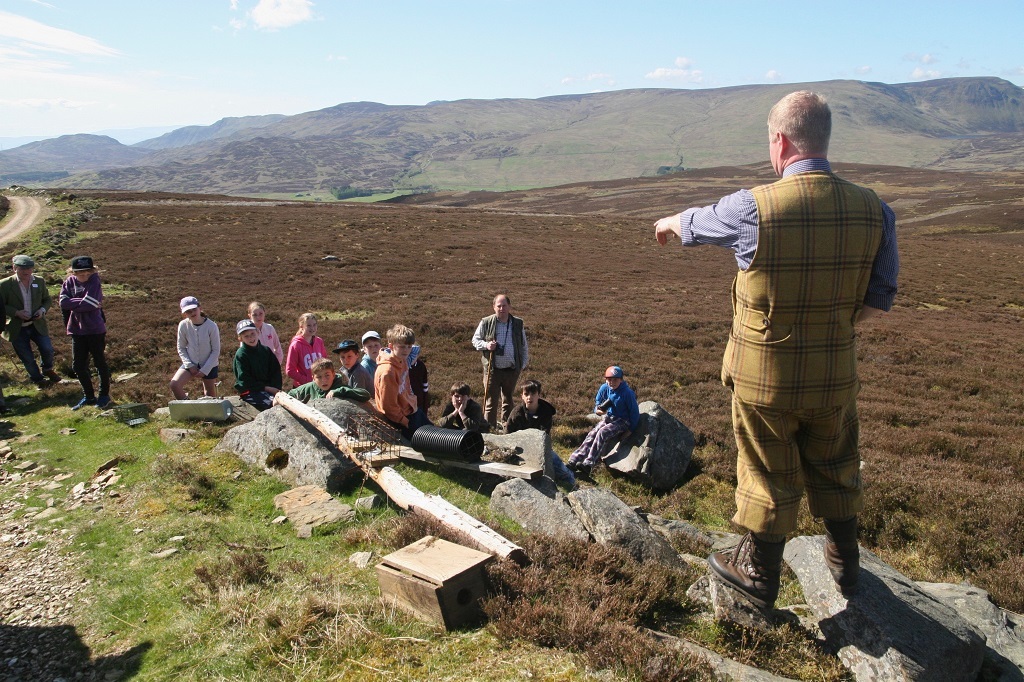
An insight into the life of a rare Scottish bird
Politicians and school pupils have been given a rare insight into the recovery of one of Scotland’s most loved and rarest birds – the black grouse.
Murdo Fraser MSP joined landowners, Scottish Natural Heritage and government officials and Ardvreck School pupils for a tour around Strathbraan in Perthshire, which houses important numbers of black grouse.
The black grouse is a red-listed species, with Scotland holding most of the UK population and, at this time of year, males fight to display at the best ‘lek’ sites in a bid to attract females.
Attendees at the first ever open day hosted by Tayside and Central Scotland Moorland Group, learned how careful land stewardship had seen populations rebound in the area.
They were also driven through the local glen to see populations of endangered wading birds, with Strathbraan defined as ‘nationally important’ for red-listed species such as the curlew: Britain’s most urgent conservation priority.
Gamekeepers described how habitat management and the legal control of abundant predators had helped to increase the survival of rarer species such as black game and waders.
On one of the visited estates, a 20-year programme of woodland planting, grazing reduction, rotational heather burning, predator and bracken control had seen black grouse rise from very low numbers to around 50 male black grouse.
Gamekeeper Ronnie Kippen, who lives in the Glen said: ‘We had basically lost the black grouse from the top end of this glen. The late conservationist Dick Potts visited and advised on what could be done and thankfully his words were heeded.
‘Many thousands of metres were fenced off and the habitat thrived, providing great habitat for nesting and feeding. The control of predators helped get the balance right and it has been great to see the expansion of the black grouse, here.

A gamekeeper demonstrates legal predator control tools to school children. The control of abundant predators has helped protect black grouse populations and rare wading birds in Perthshire. (Photo: Tayside & Central Scotland Moorland Group)
‘We now have them spread throughout the whole length of Glen Quaich. It is a joy to stop and watch their behaviour at this time of the year.’
A party of school children and their teachers were also shown a further site which houses three leks with over 20 males regularly sited there each spring.
The birds tend to jostle and display their white fan-like plumage early in the day before taking to rough pasture and long grass to feed.
Daniel Parker, estate manager at Abercairny added: ‘The black grouse numbers have always fluctuated in this area but that can also mean that they are spreading out, which is good.
‘Populations are certainly very strong at the moment and they have benefited from black grouse-friendly management such as predator control and the regeneration of heather through reduced grazing and muirburn. They seem to respond to habitats which are in the process of changing.’
It is estimated that there are only around 5,100 male black grouse left in the UK.
In countries such as Denmark, Holland and Belgium, they are down to their last few pairs.
A spokesperson for hosts Tayside and Central Scotland Moorland Group, said: ‘It was great to see children out learning about the management of the moors and the low ground which produces so much wildlife.’
TAGS

